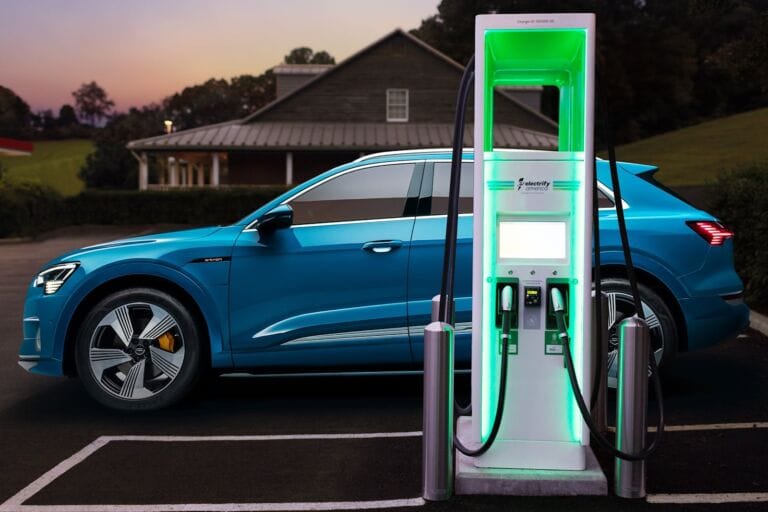
2025 India Electric Cars vs Petrol Cars (Cost Comparison Guide)

Table of Contents
The electric vehicle (EV) wave in India is no longer just hype. Backed by government incentives, rising fuel prices, and growing awareness of climate change, EVs are becoming a serious alternative to petrol and diesel vehicles. But the big question remains are EVs truly cheaper and more practical for Indian consumers in 2025?
This guide compares the total cost of ownership (TCO) of electric cars, petrol cars, and two-wheelers to give a clear picture of where the real value lies.
Intial Purchase Price and Goverment Incentives
EVs still carry a higher upfront price than petrol vehicles because of battery costs. For example, the Tata Nexon EV starts at around ₹14.5 lakh (after subsidies), while its petrol counterpart begins near ₹8.1 lakh. Similarly, the MG ZS EV starts above ₹18 lakh, while similar-sized petrol SUVs are priced closer to ₹12 lakh.

The Indian government is working to reduce this gap through the FAME-II scheme, which provides subsidies up to ₹1.5 lakh for eligible EVs. Many states — including Delhi, Maharashtra, and Karnataka — offer extra incentives like road tax waivers and registration fee exemptions.
Importantly, EVs attract just 5% GST, compared to 28% plus cess on petrol cars, making them more attractive in the long run.
Running Costs: Fuel vs Charging
Fuel expenses are where EVs win hands down. With petrol averaging around ₹110 per litre in 2025, a typical petrol car costs between ₹6.1 and ₹7.3 per km.
By comparison, EVs consume 12 to 15 kWh per 100 km. Home charging costs ₹6 to ₹8 per kWh, bringing the running cost down to just ₹1 to ₹1.5 per km. Even when using public fast chargers (₹15 to ₹25 per kWh), EVs remain more affordable than petrol.
Over 12,000 km of driving annually:
- Petrol car fuel expense: ₹78,000 to ₹90,000
- EV charging cost: ₹12,000 to ₹18,000
That’s a saving of ₹60,000 to ₹75,000 per year just on energy.
Maintenance and Depreciation
EVs have fewer moving parts, no oil changes, and lower brake wear thanks to regenerative braking. On average, a five-year maintenance cost for an EV is around ₹25,000 compared to ₹75,000 for petrol cars.
Battery replacement remains a concern, costing between ₹3 and ₹7 lakh after 7–10 years. However, most manufacturers now provide 8-year battery warranties, easing long-term worries.
Depreciation has been higher for EVs in the past, but the gap is narrowing. A Tata Nexon EV retains about 50% of its value after five years, while petrol cars typically retain 60–65%.
Charging Infrastructure
Charging availability is still a major concern for Indian buyers. In 2025, India has around 1,800 public charging stations, mostly in metros. The government targets 30,000 stations by 2030, and private players like Tata Power are aggressively expanding networks.
Home charging setups cost ₹30,000 to ₹50,000 but provide the convenience of overnight charging, making EV ownership much more practical.
Two-Wheelers: A Fast-Growing Segment
While cars grab the headlines, the real EV revolution in India is happening on two wheels.
Electric scooters and bikes like Ola S1 Pro, Ather 450X, and TVS iQube are becoming mainstream. Prices range from ₹1.2 lakh to ₹1.6 lakh, which is higher than petrol scooters (₹70,000–₹1 lakh). But the savings are significant:
- Petrol scooter running cost: ₹2.5–₹3 per km
- EV scooter running cost: ₹0.8–₹1.2 per km
For daily commuters covering 30–40 km a day, this translates to annual savings of ₹20,000–₹25,000. With FAME-II incentives, many electric scooters are now price-competitive with petrol models.
This segment is expected to lead EV adoption in India due to affordability and ease of charging.
Environmental Benefits
EVs offer zero tailpipe emissions, directly reducing the choking air pollution in Indian cities. While electricity generation still relies heavily on coal, India’s shift toward renewable energy is improving the overall carbon footprint of EVs.
Every EV on the road not only cuts emissions but also reduces dependence on imported fossil fuels, supporting India’s energy security.
Cost Comparison Table
| Category | Electric Cars (₹) | Petrol Cars (₹) | Electric Two-Wheelers (₹) | Petrol Two-Wheelers (₹) |
|---|---|---|---|---|
| Initial Purchase Cost | 14.5–19.5 lakh | 6–13.5 lakh | 1.2–1.6 lakh | 0.7–1 lakh |
| Running Cost (per km) | 1–1.5 | 6.1–7.3 | 0.8–1.2 | 2.5–3 |
| Maintenance (5 years) | ~25,000 | ~75,000 | ~5,000–8,000 | ~15,000–20,000 |
| Battery Replacement | 3–7 lakh (7–10 yrs) | Not applicable | 60,000–80,000 (6–8 yrs) | Not applicable |
| Incentives/Subsidies | Up to 1.5 lakh | None | ₹30,000–₹50,000 | None |
| Fuel/Charging (Annually, 12,000 km) | 12,000–18,000 | 78,000–90,000 | 6,000–8,000 | 20,000–24,000 |
| Environmental Impact | Zero tailpipe emissions | High emissions | Zero tailpipe emissions | High emissions |
In 2025, electric vehicles are no longer a futuristic concept for India, they’re a practical choice. While cars still face challenges of high upfront cost and charging infrastructure, the running cost advantage and government support are undeniable.
Two-wheelers, however, are where the EV market is truly exploding. For urban commuters, they already make more financial and environmental sense than petrol models.
If you drive more than 12,000 km a year or commute daily on two wheels, switching to electric could save you tens of thousands annually while helping India move closer to its clean energy goals.








